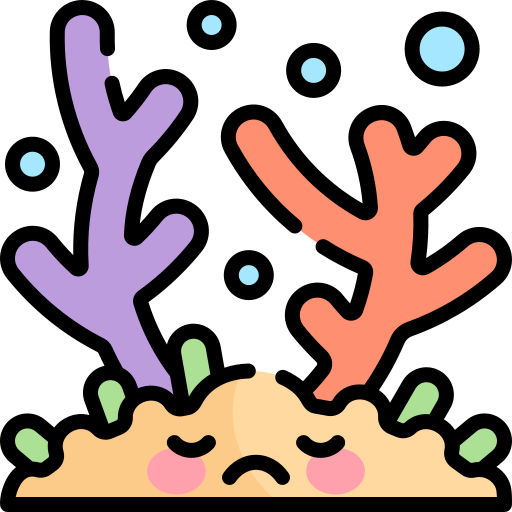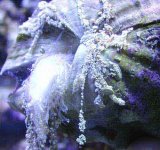A tridanca maxima clam that I've had in my tank for over 4 years died suddenly about a week ago. It looked fine the day before, and the next morning the mantel was pulled completely into it's shell.
Tonight I found the byssal gland of one of my other tridanca clams detached and lying in the sand next to it. I also noticed a layer of slime-like algae on the shell, and I don't have any slime algae anywhere else in the tank. The clam still reacts to changes in light intensity, but I think it's on it's way out too. Is there any hope for it once the byssal gland is removed?
The only recent change in the tank is the addition of several corals and some live rock from a friends reef aquarium who decided to quit the hobby - this was a couple weeks ago. I have not been able to spot any parasitic snails on any of the clams, but I think something from his tank must be causing this. Does anyone have any ideas what it could be? All of my water parameters are normal and stable, and all corals and fish are thriving.
I attached a picture of my Deresa. It didn't look normal today, so I picket it up to look at the underside and it wasnt attached to the substrate any more.. The byssal gland is damaged, and it looks like it's about to fall off... If you look closely there are bristle worms, and a trilobyte/rolly polly looking thing... I've always had the bristle worms in my sand, and I don't think they are causing the problem. Does anyone know what the other thing is? Should I remove it from the tank?
Any help would be appreciated.
Tonight I found the byssal gland of one of my other tridanca clams detached and lying in the sand next to it. I also noticed a layer of slime-like algae on the shell, and I don't have any slime algae anywhere else in the tank. The clam still reacts to changes in light intensity, but I think it's on it's way out too. Is there any hope for it once the byssal gland is removed?
The only recent change in the tank is the addition of several corals and some live rock from a friends reef aquarium who decided to quit the hobby - this was a couple weeks ago. I have not been able to spot any parasitic snails on any of the clams, but I think something from his tank must be causing this. Does anyone have any ideas what it could be? All of my water parameters are normal and stable, and all corals and fish are thriving.
I attached a picture of my Deresa. It didn't look normal today, so I picket it up to look at the underside and it wasnt attached to the substrate any more.. The byssal gland is damaged, and it looks like it's about to fall off... If you look closely there are bristle worms, and a trilobyte/rolly polly looking thing... I've always had the bristle worms in my sand, and I don't think they are causing the problem. Does anyone know what the other thing is? Should I remove it from the tank?
Any help would be appreciated.






